FD83 stands for Fuel Depot 83; the site is located at 83°00’ South, 11°38’ East. FD83-South Pole camp is used as a stopping point, and 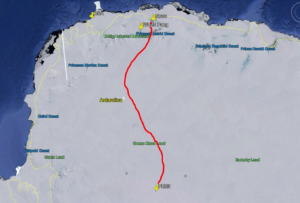 refueling location by the White Desert during the 2018-2019 season.
refueling location by the White Desert during the 2018-2019 season.
We did suppose Oleg Sakharov RI1ANX could have been there and today, thanks to Felix DL5XL/DP1OL who have spoken with Oleg, we got a confirmation from him directly, so that a NEW WAP reference WAP MNB-Ø9 has been issued to this Antarctic site.
Here, some news about it: The Fuel Depot 83 location site (83°00’S 11°38’E), henceforth referred to as FD83, has been used as fuel storage depot and logistical base facility jointly by the Antarctic Logistic Centre International (ALCI) and The Antarctic Company (TAC) since 2010. The site is used during the austral summer, between November and January as a refuelling and rest stop location for onwards visits to the South Pole. It is used by TAC for refuelling in order to carry out visits on behalf of White Desert as well as other organisations.
Each year a group of “Arctic Trucks employees” participate in different projects throughout Antarctica and this Antarctica summer, seven members of the team have been working there on three different projects, one of which is the New site called Fuel depot on FD83 for aircraft on their way to the South Pole.
The mission start from Novo Runway (WAP MNB-Ø6) with a traverse of 1700 kilometers journey to FD83. The journey was 90 hours, with 69 hours of driving! Since then the group has stayed there, preparing the landing strip and the fuel depot, servicing aircraft that have stopped there on their way to the South Pole. The Team is responsible for making sure the landing strip is safe, receive oil barrels that were dropped in by parachute and make the depot ready for the servicing of the aircraft. For a whole month the team stayed in this isolated place, in tents, with the temperature at around minus 40 degrees Celsius! On this 2018-2019 recent occasion, a group of Russians (RI1ANX is among them), who are still there, did join the traverse that reached the site.
Now Oleg Sakharov RI1ANX is now on the way back and we did work him again in the evening of Jan 2, 2019 at 23:25 UTC
Read also: https://arctictrucksnewsfeed.com/2017/12/19/project-1-fuel-depot-on-fd83/
TNX Oleg RI1ANX & Felix DL5XL/DP1POL

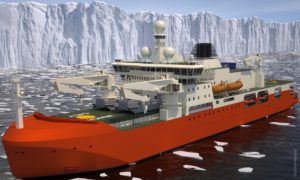 Australia’s new Antarctic Icebreaker and resupply ship RSV Nuyina, is due to arrive in Hobart in 2020. It will be the main lifeline to Australia’s Antarctic and sub-Antarctic research stations and the central platform of our Antarctic and Southern Ocean scientific research, to replace the Aurora Australis.
Australia’s new Antarctic Icebreaker and resupply ship RSV Nuyina, is due to arrive in Hobart in 2020. It will be the main lifeline to Australia’s Antarctic and sub-Antarctic research stations and the central platform of our Antarctic and Southern Ocean scientific research, to replace the Aurora Australis. To the researchers and personnel actually involved in Antarctica, to the scientific Organizations and Managers to whom we request to continue the research programs as a WW goal, to the Antarctic enthusiasts, to the students, to the Hams on the Icy Continent trying to set antennas and Radio to give us the emotion of a real DX, to our followers all over the world, WAP Staff wish Happy New Year 2019!
To the researchers and personnel actually involved in Antarctica, to the scientific Organizations and Managers to whom we request to continue the research programs as a WW goal, to the Antarctic enthusiasts, to the students, to the Hams on the Icy Continent trying to set antennas and Radio to give us the emotion of a real DX, to our followers all over the world, WAP Staff wish Happy New Year 2019!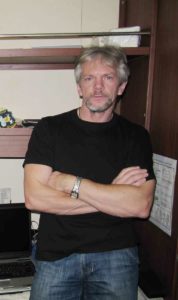 s to Eugene RZ3EC, to Alexei RN1ON and to Alexander RW3RN, here below are some information about the now a day activity by Russian Hams in Antarctica:
s to Eugene RZ3EC, to Alexei RN1ON and to Alexander RW3RN, here below are some information about the now a day activity by Russian Hams in Antarctica: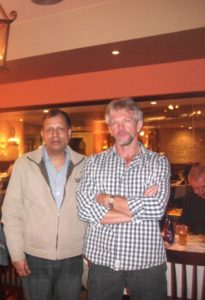
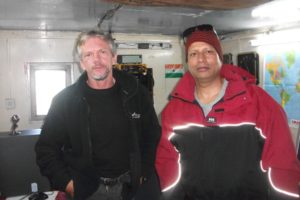 who is actually among a logistics convoy in southern Antarctica and for time to time active on CW 30 & 40 mts bands. His last coordinates/Grid locator KA06: Lat. -83.40448, Long. 20.58928.
who is actually among a logistics convoy in southern Antarctica and for time to time active on CW 30 & 40 mts bands. His last coordinates/Grid locator KA06: Lat. -83.40448, Long. 20.58928. The final miles of a nearly two-month race across Antarctica, a lonely effort marked by long days, short nights and stunning endurance, ended Wednesday with a sprint to the finish.
The final miles of a nearly two-month race across Antarctica, a lonely effort marked by long days, short nights and stunning endurance, ended Wednesday with a sprint to the finish. Felix Riess, DL5XL, is actually signing DP1POL/P from Kohnen Station (WAP DEU-11), Antarctica. The time of Felix stay at Kohnen is not known. QSL via DL1ZBO
Felix Riess, DL5XL, is actually signing DP1POL/P from Kohnen Station (WAP DEU-11), Antarctica. The time of Felix stay at Kohnen is not known. QSL via DL1ZBO
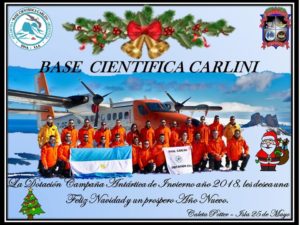
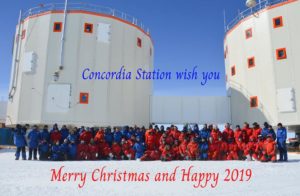
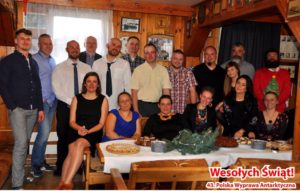
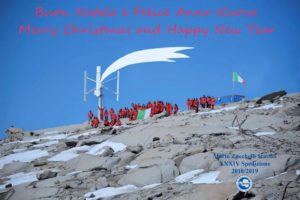
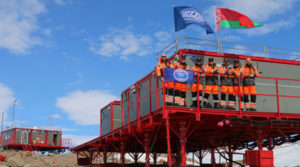 Belarusian Antarctic Station 67° 39’ 30” South, 46° 09’ 12” East, Mount Vechernyaya, Enderby Land, East Antarctica.(WAP BLR-NEW)
Belarusian Antarctic Station 67° 39’ 30” South, 46° 09’ 12” East, Mount Vechernyaya, Enderby Land, East Antarctica.(WAP BLR-NEW)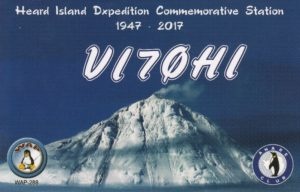 Thanks to Charles R. Wilmott, MØOXO for his excellent QSL service.
Thanks to Charles R. Wilmott, MØOXO for his excellent QSL service.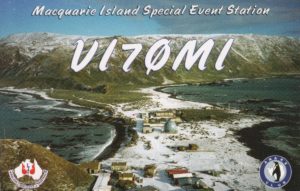 years of ANARE (Australian National Antarctic Research Expeditions) for Macquarie Island, which since 1947 have served Australia in the south polar regions.
years of ANARE (Australian National Antarctic Research Expeditions) for Macquarie Island, which since 1947 have served Australia in the south polar regions.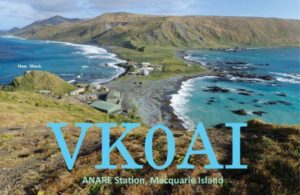 Just to remind the chasers that Norbert (VK5MQ) is still active as VKØAI from Macquarie Island and expect to be there till March 2019; follow the spotson the Cluster. .He has internet access, and is an avid user of both FT8 & eQSL.cc, so if you make a contact expect it to be confirmed via eQSL within minutes!
Just to remind the chasers that Norbert (VK5MQ) is still active as VKØAI from Macquarie Island and expect to be there till March 2019; follow the spotson the Cluster. .He has internet access, and is an avid user of both FT8 & eQSL.cc, so if you make a contact expect it to be confirmed via eQSL within minutes!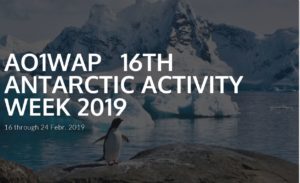 11 years ago, the 1st participation to the Antarctic Activity Week by the EA1CS’s Spanish Team, was one of the important presence, to promote Worldwide attention to the Icy Continent as a land of science and peace, to its wildlife, to the thousands of studies that involve the entire worldwide community. On the occasion of that first EA’s AAW (11 years ago), the group will be “On the Air” again signing AO1WAP (WAP-137), from February 16 to 24, 2019.
11 years ago, the 1st participation to the Antarctic Activity Week by the EA1CS’s Spanish Team, was one of the important presence, to promote Worldwide attention to the Icy Continent as a land of science and peace, to its wildlife, to the thousands of studies that involve the entire worldwide community. On the occasion of that first EA’s AAW (11 years ago), the group will be “On the Air” again signing AO1WAP (WAP-137), from February 16 to 24, 2019. Very sad news coming from Antarctica.
Very sad news coming from Antarctica.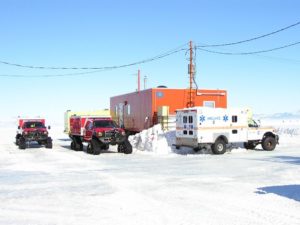
 RI1ANC – Vostok (WAP RUS-13): Alexei Turkeev, RD1AV (Season Team leader), just arrived at Vostok Base for the new campaign, is now active as RI1ANC during his spare time
RI1ANC – Vostok (WAP RUS-13): Alexei Turkeev, RD1AV (Season Team leader), just arrived at Vostok Base for the new campaign, is now active as RI1ANC during his spare time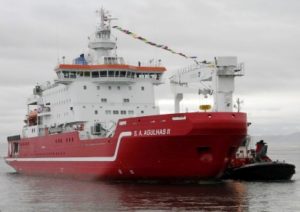 South Africa’s Polar research vessel the SA Agulhas II departs for Antarctica on Friday. Fifty-eight scientists are on board and will spend 14 months on the icy continent; the Weddell Sea Expedition will conduct marine and glaciological research.
South Africa’s Polar research vessel the SA Agulhas II departs for Antarctica on Friday. Fifty-eight scientists are on board and will spend 14 months on the icy continent; the Weddell Sea Expedition will conduct marine and glaciological research.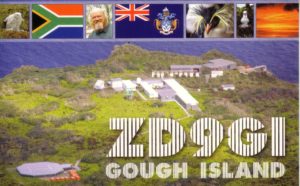 On Gough Island (WAP ZAF-Ø5), about 400 km (250 mi) south-east of the Tristan da Cunha archipelago there is a Scientific Research base and a Weather Station which the South African National Antarctic Programme has maintained, with British permission, continually on the island since 1956.
On Gough Island (WAP ZAF-Ø5), about 400 km (250 mi) south-east of the Tristan da Cunha archipelago there is a Scientific Research base and a Weather Station which the South African National Antarctic Programme has maintained, with British permission, continually on the island since 1956. Researchers and personnel of Polish Arctowski Station (WAP POL-Ø1) in Antarctica did celebrate the Antarctica Day on last Dec. 1st .
Researchers and personnel of Polish Arctowski Station (WAP POL-Ø1) in Antarctica did celebrate the Antarctica Day on last Dec. 1st .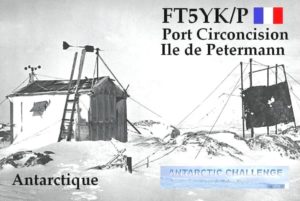 Mehdi, F5PFP wrote: As regards VP8DLM , FT5YK , CE9XX (2011 Antarctic Expedition) , the QSL cards have been almost exhausted. It is an occasion to print new cards with a new design for a final and limited edition , anyone interested?
Mehdi, F5PFP wrote: As regards VP8DLM , FT5YK , CE9XX (2011 Antarctic Expedition) , the QSL cards have been almost exhausted. It is an occasion to print new cards with a new design for a final and limited edition , anyone interested? ISEA is a multi-disciplinary, multi-institutional program conducted every year by the Union Ministry of Earth Sciences, started in 1981. It has gained global acceptance after India signed Antarctic Treaty.
ISEA is a multi-disciplinary, multi-institutional program conducted every year by the Union Ministry of Earth Sciences, started in 1981. It has gained global acceptance after India signed Antarctic Treaty.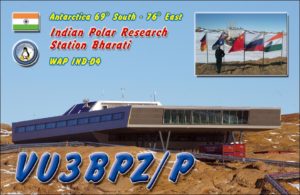 f Bharti Promontory.
f Bharti Promontory.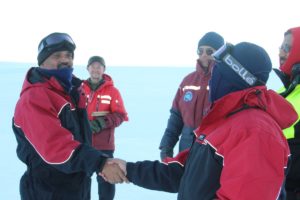 rector
rector 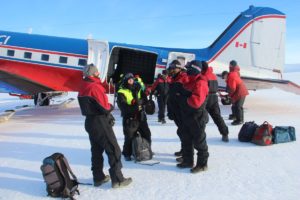 General, GSI and Veteran Antarctican was guest speaker together with Dr. M. Ravichandran, Director NCPOR; Shri M. Javed Beg and Dr. Thamban Meloth, Dr. K.P. Krishnan, Dr. Mahesh B.S. along with the members of fourth batch of expeditionners ready to head down South!
General, GSI and Veteran Antarctican was guest speaker together with Dr. M. Ravichandran, Director NCPOR; Shri M. Javed Beg and Dr. Thamban Meloth, Dr. K.P. Krishnan, Dr. Mahesh B.S. along with the members of fourth batch of expeditionners ready to head down South!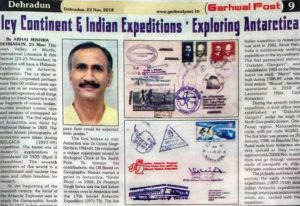 A great Antarctic Philatelic exhibition named “Icy Continent & Indian Expeditions ‘ Exploring Antarctica” curated by Abhay Mishra at Valley of Words , International Literature & Art Festival, Dehra Dun. Venue – Hotel Madhuban, Blue Star Gallery (India), has just ended on last 25th Nov 2018.
A great Antarctic Philatelic exhibition named “Icy Continent & Indian Expeditions ‘ Exploring Antarctica” curated by Abhay Mishra at Valley of Words , International Literature & Art Festival, Dehra Dun. Venue – Hotel Madhuban, Blue Star Gallery (India), has just ended on last 25th Nov 2018. Uttarakhand. He has authored a book titled “Uttarakhand – A philatelic Journey”, published by Department of Post, Uttarakhand Circle. He has been to Antarctica with the XXI Indian Scientific Expedition as a communication officer. Professionally he is a scientist with Defence Research and Development Organization. (Pic aside shows Abhay Mishra & Dr. G.S Shirohi, Ph.D Delhi University)
Uttarakhand. He has authored a book titled “Uttarakhand – A philatelic Journey”, published by Department of Post, Uttarakhand Circle. He has been to Antarctica with the XXI Indian Scientific Expedition as a communication officer. Professionally he is a scientist with Defence Research and Development Organization. (Pic aside shows Abhay Mishra & Dr. G.S Shirohi, Ph.D Delhi University)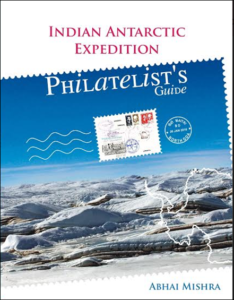 India’s involvement with Antarctic Expeditions, dates back to circa 1911.
India’s involvement with Antarctic Expeditions, dates back to circa 1911.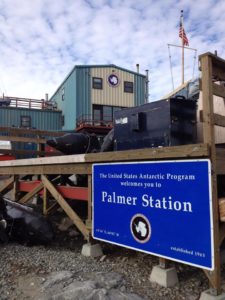 Originally built by U.S. Navy Seabees in 1967, Palmer Station (WAP USA-23) is located at 64°46′ S, 64°03′ W on Anvers Island, near the tip of the Antarctic Peninsula; it is named for Nathaniel B. Palmer, a Connecticut sealer who, on 17 November 1820, during an exploratory voyage ranging southward from the South Shetland Islands, may have been the first person to see Antarctica. (British and Russian ships were in the area at about the same time.)
Originally built by U.S. Navy Seabees in 1967, Palmer Station (WAP USA-23) is located at 64°46′ S, 64°03′ W on Anvers Island, near the tip of the Antarctic Peninsula; it is named for Nathaniel B. Palmer, a Connecticut sealer who, on 17 November 1820, during an exploratory voyage ranging southward from the South Shetland Islands, may have been the first person to see Antarctica. (British and Russian ships were in the area at about the same time.)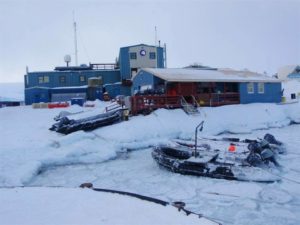
 A rendering of the proposed redevelopment and consolidation of buildings at McMurdo Station. This conceptual drawing is subject to revision prior to final design. (Image Credit: Leidos)
A rendering of the proposed redevelopment and consolidation of buildings at McMurdo Station. This conceptual drawing is subject to revision prior to final design. (Image Credit: Leidos) o being able to redevelop McMurdo into an energy and operationally efficient platform from which to launch world-class Antarctic science.
o being able to redevelop McMurdo into an energy and operationally efficient platform from which to launch world-class Antarctic science.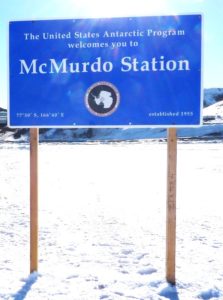
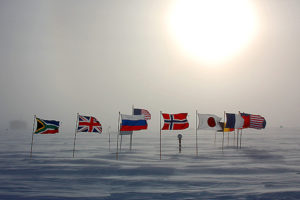
 Treaties and signatories
Treaties and signatories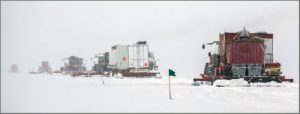 The South Pole overland Traverse, or SPoT, left McMurdo Station (WAP USA-22) on Antarctica’s Ross Island on Nov. 12, to begin a trek of more 1,000 miles across the Antarctic Plateau to NSF’s Amundsen-Scott South Pole Station (WAP USA-36).
The South Pole overland Traverse, or SPoT, left McMurdo Station (WAP USA-22) on Antarctica’s Ross Island on Nov. 12, to begin a trek of more 1,000 miles across the Antarctic Plateau to NSF’s Amundsen-Scott South Pole Station (WAP USA-36). 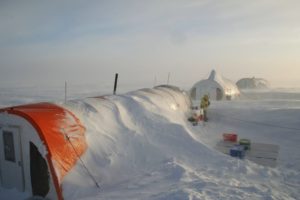 Law Dome was roughly mapped by the United States Feological Survey from aerial photographs taken by U.S. Navy (Operation Highjump) in the year 1946–47, and has been the subject of intensive glaciological and geophysical surveys by Australia National Antarctic Research Expedition between 1962 and 1965. It was named by the “Antarctic Names Committee of Australia” for Phillip Law, Director of the Australian Antarctic Division from 1949 to 1966.
Law Dome was roughly mapped by the United States Feological Survey from aerial photographs taken by U.S. Navy (Operation Highjump) in the year 1946–47, and has been the subject of intensive glaciological and geophysical surveys by Australia National Antarctic Research Expedition between 1962 and 1965. It was named by the “Antarctic Names Committee of Australia” for Phillip Law, Director of the Australian Antarctic Division from 1949 to 1966.
 The scientific expedition ship Akademik Fedorov has just departed from St. Petersburg to the shores of the Antarctic. This will be the 43rd expeditionary flight of the flagship of the Russian polar fleet. The ship’s captain is Oleg Kalmykov Kalmykov, the head of the seasonal expedition is Mikhail Viktorovich Bugayov.
The scientific expedition ship Akademik Fedorov has just departed from St. Petersburg to the shores of the Antarctic. This will be the 43rd expeditionary flight of the flagship of the Russian polar fleet. The ship’s captain is Oleg Kalmykov Kalmykov, the head of the seasonal expedition is Mikhail Viktorovich Bugayov.
 RUS-Ø8), Novolazarevskaya (WAP RUS-Ø9), Bellingsgausen (WAP RUS-Ø1), Montevideo – Bremerhaven – St. Petersburg. At this stage, the vessel will supply and replace the wintering team at Novolazarevskaya and Bellingshausen stations, as well as complete seasonal operations at these stations and seasonal bases Molodezhnaya and Vechernyaya Mountain (WAP BLR-NEW). At the exit from the Antarctic, the vessel will conduct marine research in the Bransfield and Drake Straits. The return of the “Akademik Fedorov” to the home port is planned for June 2, 2019.
RUS-Ø8), Novolazarevskaya (WAP RUS-Ø9), Bellingsgausen (WAP RUS-Ø1), Montevideo – Bremerhaven – St. Petersburg. At this stage, the vessel will supply and replace the wintering team at Novolazarevskaya and Bellingshausen stations, as well as complete seasonal operations at these stations and seasonal bases Molodezhnaya and Vechernyaya Mountain (WAP BLR-NEW). At the exit from the Antarctic, the vessel will conduct marine research in the Bransfield and Drake Straits. The return of the “Akademik Fedorov” to the home port is planned for June 2, 2019. Pic aside show the Chilean Navy Base , Arturo Prat (WAP CHL-Ø1).
Pic aside show the Chilean Navy Base , Arturo Prat (WAP CHL-Ø1).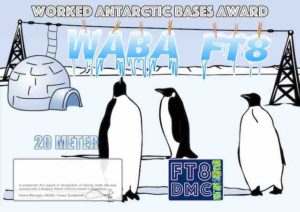 n recognition of international two-way FT8 amateur radio communication, the FT8 Digital Mode Club (FT8-DMC) issues Worked Antarctic Bases Award certificates to amateur radio stations worldwide. Qualification for the FT8 WABA award is based on an examination by the FT8 WABA Award Manager, from QSOs that the applicant has made with minimum 3 different amateur radio stations from Antarctica . All contacts must be made from the same country. Band endorsements for 6, 10, 12, 15, 17, 20, 30, 40, 80 and 160m available.
n recognition of international two-way FT8 amateur radio communication, the FT8 Digital Mode Club (FT8-DMC) issues Worked Antarctic Bases Award certificates to amateur radio stations worldwide. Qualification for the FT8 WABA award is based on an examination by the FT8 WABA Award Manager, from QSOs that the applicant has made with minimum 3 different amateur radio stations from Antarctica . All contacts must be made from the same country. Band endorsements for 6, 10, 12, 15, 17, 20, 30, 40, 80 and 160m available.
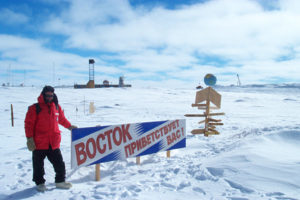 Alexander, RX0QM, ex.RI59ANT & RI1ANB (2017) is actually operating from Vostok Station (WAP RUS-13), in Antarctica. He is not very active but, being there till January 2019, there are good chances to work him.
Alexander, RX0QM, ex.RI59ANT & RI1ANB (2017) is actually operating from Vostok Station (WAP RUS-13), in Antarctica. He is not very active but, being there till January 2019, there are good chances to work him.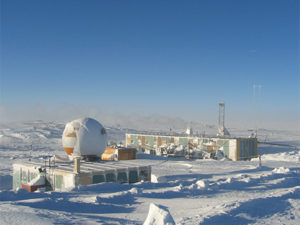 it remains one of Russia’s major base stations, with people living there year-round.
it remains one of Russia’s major base stations, with people living there year-round.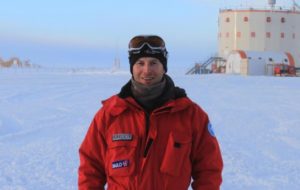 Daniele Karlicek (pic aside), of the Department of Mathematics and Geosciences at the University of Trieste (Italy), did winter over a couple of times at the Italian-French Base “Concordia-Dome C” (WAP MNB-Ø3) in Antarctica, involved in a paleoclimatic research campaign as part of the research activities carried out at the Isotopic Geochemistry Laboratory of the University of Trieste.
Daniele Karlicek (pic aside), of the Department of Mathematics and Geosciences at the University of Trieste (Italy), did winter over a couple of times at the Italian-French Base “Concordia-Dome C” (WAP MNB-Ø3) in Antarctica, involved in a paleoclimatic research campaign as part of the research activities carried out at the Isotopic Geochemistry Laboratory of the University of Trieste. Now Daniele has informed WAP that, time ago, an Australian Organization which has probably seen the “ice Church” published somewhere, did ask him to set a video on this matter.
Now Daniele has informed WAP that, time ago, an Australian Organization which has probably seen the “ice Church” published somewhere, did ask him to set a video on this matter.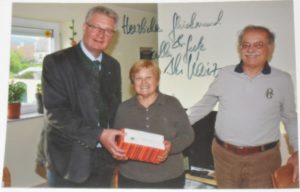 I am Luciano IK2QPO (also OE3ZLL) and I live part in Milan, in the northern of Italy, and part in Pfaffstätten, a small town near Vienna, the capital city of Austria. Since I am interested in the Antarctic, every year in February I participate to the Antarctic Week as II2ANT WAP-Ø3Ø.
I am Luciano IK2QPO (also OE3ZLL) and I live part in Milan, in the northern of Italy, and part in Pfaffstätten, a small town near Vienna, the capital city of Austria. Since I am interested in the Antarctic, every year in February I participate to the Antarctic Week as II2ANT WAP-Ø3Ø.
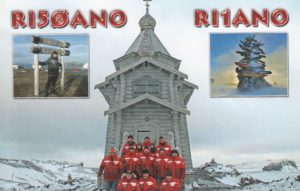 Bellingshausen Station (WAP RUS-Ø1) is a Russian (formerly Soviet) Antarctic Station at Collins Harbour, on King George Island of the South Shetland Islands.
Bellingshausen Station (WAP RUS-Ø1) is a Russian (formerly Soviet) Antarctic Station at Collins Harbour, on King George Island of the South Shetland Islands.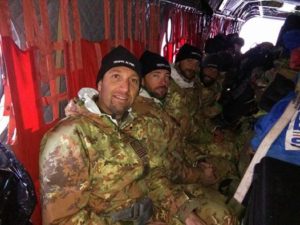 Danilo Collino IZ1KHY (pic aside) will be involved in Antarctica till the end of February 2019, following several scientific missions and research projects, including remote camps.
Danilo Collino IZ1KHY (pic aside) will be involved in Antarctica till the end of February 2019, following several scientific missions and research projects, including remote camps.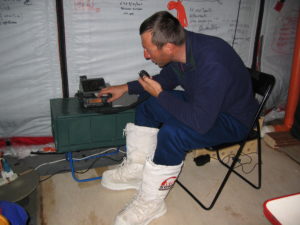 ation (WAP ITA-Ø1).
ation (WAP ITA-Ø1).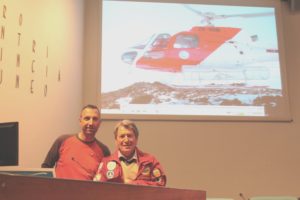 will succeed and in this case the call could be IAØ/IZ1KHY from the Italians sites and eventually KC4/IZ1KHY, ZL5/IZ1KHY, HL8/IZ1KHY. At Concordia Station he will also use IAØ/IZ1KHY. On remote camps he will try to set some dipoles and be active SSB only (power 50-100W) as KC4/IZ1KHY/P.
will succeed and in this case the call could be IAØ/IZ1KHY from the Italians sites and eventually KC4/IZ1KHY, ZL5/IZ1KHY, HL8/IZ1KHY. At Concordia Station he will also use IAØ/IZ1KHY. On remote camps he will try to set some dipoles and be active SSB only (power 50-100W) as KC4/IZ1KHY/P. On October 21, 1921, a qualified group of radio amateurs ( the first on the air) met, in an assembly held in the auditorium of the newspaper “La Prensa”, did found the Radio Club Argentino, which historically became the third Radio Club in the world ,
On October 21, 1921, a qualified group of radio amateurs ( the first on the air) met, in an assembly held in the auditorium of the newspaper “La Prensa”, did found the Radio Club Argentino, which historically became the third Radio Club in the world ,
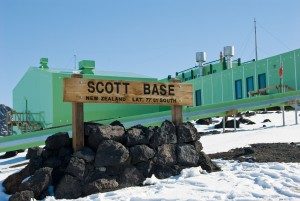 Antarctica New Zealand staff were scheduled to fly south on October 1 to set up Scott Base (WAP NZL-ØØ1) for the summer science season ahead, but wild winds and snow closed the McMurdo Sound airfields, causing the longest delay in decades to the start of the season.
Antarctica New Zealand staff were scheduled to fly south on October 1 to set up Scott Base (WAP NZL-ØØ1) for the summer science season ahead, but wild winds and snow closed the McMurdo Sound airfields, causing the longest delay in decades to the start of the season.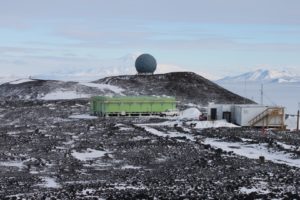 The new science season at Antarctica is just a few days away from opening and NIWA researchers are busy packing containers and shipping them to the ice where they will be reunited with them in the coming months.
The new science season at Antarctica is just a few days away from opening and NIWA researchers are busy packing containers and shipping them to the ice where they will be reunited with them in the coming months.
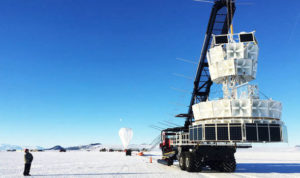 Last week, a team of physicists from the Pennsylvania State University did publish an interesting theory about the origin of that cosmic radiation that seems to be originated in our own planet. If that theory proves to be true, what emits the ice of Antarctica is a new type of particle that goes completely out of the current standard model of physics and would demonstrate the validity of the supersymmetry model.
Last week, a team of physicists from the Pennsylvania State University did publish an interesting theory about the origin of that cosmic radiation that seems to be originated in our own planet. If that theory proves to be true, what emits the ice of Antarctica is a new type of particle that goes completely out of the current standard model of physics and would demonstrate the validity of the supersymmetry model.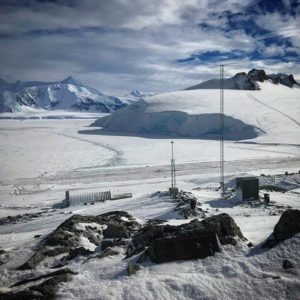 Rothera Station (WAP GBR-12) 67° 34’ Ø3” South, 68° Ø7’ 47” East, is the BAS logistics centre for theAntarctic and home to well-equipped biological laboratories and facilities for a wide range of research. The station is situated on a rock and raised beach promontory at the southern extremity of Wormald Ice Piedmont, South-Eastern Adelaide Island.
Rothera Station (WAP GBR-12) 67° 34’ Ø3” South, 68° Ø7’ 47” East, is the BAS logistics centre for theAntarctic and home to well-equipped biological laboratories and facilities for a wide range of research. The station is situated on a rock and raised beach promontory at the southern extremity of Wormald Ice Piedmont, South-Eastern Adelaide Island. Lee operates barefoot, just 100 Watts but he has just started to be on air all bands CW and SSB; he will stay at King Sejong Base until the end of December.
Lee operates barefoot, just 100 Watts but he has just started to be on air all bands CW and SSB; he will stay at King Sejong Base until the end of December.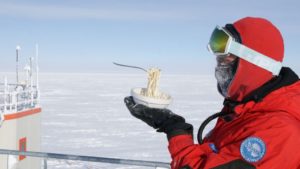 Eating outside can be one of life’s great joys, but it’s a whole different story when you live in Antarctica.The scientists working at Concordia Station (aka Dome C-WAP MNB-Ø3), one of the most remote places on Earth at around 1,000 miles from the Geographical South Pole, rarely get that pleasure with temperatures dipping as low as -80°C in winter.
Eating outside can be one of life’s great joys, but it’s a whole different story when you live in Antarctica.The scientists working at Concordia Station (aka Dome C-WAP MNB-Ø3), one of the most remote places on Earth at around 1,000 miles from the Geographical South Pole, rarely get that pleasure with temperatures dipping as low as -80°C in winter.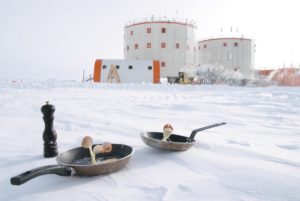
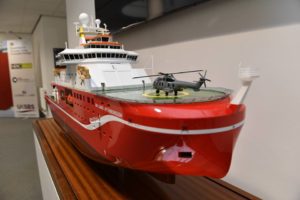 Construction is progressing on the RRS Sir David Attenborough one of the most advanced polar research vessels in the world. From 2019 onwards scientists researching oceans, ice and atmosphere will have access to state-of-the-art facilities on this floating multidisciplinary research platform.
Construction is progressing on the RRS Sir David Attenborough one of the most advanced polar research vessels in the world. From 2019 onwards scientists researching oceans, ice and atmosphere will have access to state-of-the-art facilities on this floating multidisciplinary research platform.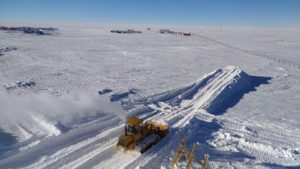 The XXXIV Italian Antarctic Campaign (2018-2019) has just begun few days ago. Mario Zucchelli Station (WAP ITA-Ø1) has been open and personnel is working on the outside to rebuild the air strip, waiting for the first airplane and then, the start of the summer campaign. The helicopters make a stop on one of the 3 equipped platforms, the light aircraft equipped with skis land on any flat snow-covered surface, the Hercules C-130 instead (with wheels) on a 3000 meter long seasonal track that is set on sea ice.
The XXXIV Italian Antarctic Campaign (2018-2019) has just begun few days ago. Mario Zucchelli Station (WAP ITA-Ø1) has been open and personnel is working on the outside to rebuild the air strip, waiting for the first airplane and then, the start of the summer campaign. The helicopters make a stop on one of the 3 equipped platforms, the light aircraft equipped with skis land on any flat snow-covered surface, the Hercules C-130 instead (with wheels) on a 3000 meter long seasonal track that is set on sea ice.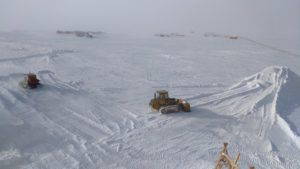 Terra Vittoria, between Campbell and Drygalski glaciers. The coordinates of the station are: latitude 74° 41′ 42″ South, longitude 164° 07′ 23″ East.
Terra Vittoria, between Campbell and Drygalski glaciers. The coordinates of the station are: latitude 74° 41′ 42″ South, longitude 164° 07′ 23″ East.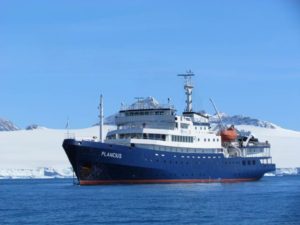 Some clips and photographs of a trip to South Georgia Island, Sub-Antarctic areas, in January, 2014 with the Oceanside Expeditions ship Plancius
Some clips and photographs of a trip to South Georgia Island, Sub-Antarctic areas, in January, 2014 with the Oceanside Expeditions ship Plancius
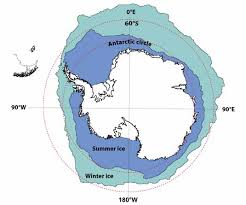 More than 26,000 years ago, sea level was much lower than it is today partly because the ice sheets that jut out from the continent of Antarctica were enormous and covered by grounded ice — ice that was fully attached to the seafloor. The ice sheets were as large as they could get and at the time, sea level was much lower because a lot of ice was sequestered on the continent. As the planet warmed, the ice sheets melted and contracted, and sea level began to rise.
More than 26,000 years ago, sea level was much lower than it is today partly because the ice sheets that jut out from the continent of Antarctica were enormous and covered by grounded ice — ice that was fully attached to the seafloor. The ice sheets were as large as they could get and at the time, sea level was much lower because a lot of ice was sequestered on the continent. As the planet warmed, the ice sheets melted and contracted, and sea level began to rise.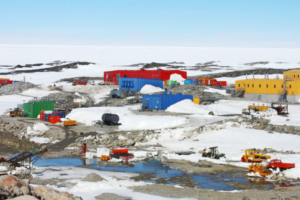 Casey Station (WAP AUS-Ø2) is significant as a transport hub for the Australian Antarctic Program, with the introduction of intercontinental jet flights for scientists and operational staff from Hobart to the Wilkins Ice Runway (WAP AUS-NEW), 65 kilometres (40 mi) inland from Cas
Casey Station (WAP AUS-Ø2) is significant as a transport hub for the Australian Antarctic Program, with the introduction of intercontinental jet flights for scientists and operational staff from Hobart to the Wilkins Ice Runway (WAP AUS-NEW), 65 kilometres (40 mi) inland from Cas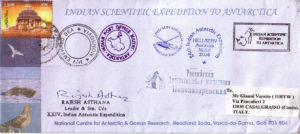 Put your cover and the request letter in a larger envelope and mail it to the base or administrative organization.
Put your cover and the request letter in a larger envelope and mail it to the base or administrative organization. Remember that these bases are in the Southern Hemisphere: summer in the North when it’s winter in the South. During their winter months, access to most of these bases is nearly impossible so in most cases, mail will only be delivered during their summer.
Remember that these bases are in the Southern Hemisphere: summer in the North when it’s winter in the South. During their winter months, access to most of these bases is nearly impossible so in most cases, mail will only be delivered during their summer.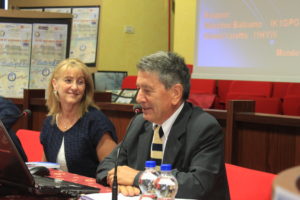 Organized by ARI Mondovì since its launching on 2003, WAP Meeting continue with no interruptions. WAPwebsite (thanks in particular to Floyd KK3Q) is giving the visitors (Hams, chasers, students) a chance to know more about the Icy Continet and the HF communication with people involved down there in scientific missions.
Organized by ARI Mondovì since its launching on 2003, WAP Meeting continue with no interruptions. WAPwebsite (thanks in particular to Floyd KK3Q) is giving the visitors (Hams, chasers, students) a chance to know more about the Icy Continet and the HF communication with people involved down there in scientific missions.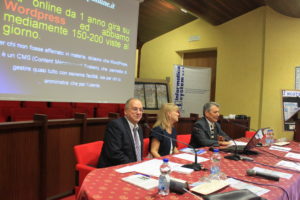 In the future it will be probably hard to record new calls and new sites by Hams operating from Antarctica, simply because other communication systems are supplanting HF contacts between amateur radio operators, rather than propagation studies and Radio experiments,
In the future it will be probably hard to record new calls and new sites by Hams operating from Antarctica, simply because other communication systems are supplanting HF contacts between amateur radio operators, rather than propagation studies and Radio experiments, can vary; some are permanent structures used during the annual Antarctic summer, whereas others are little more than tents used to support short term activities. Field camps are used for many things, from logistics (Sky Blu, WAP GBR-NEW) to dedicated scientific research such as WAIS Divide Field Camp, WAP USA-34 located at 79° 28′ 03″ South, 112° 05′ 11″ West.
can vary; some are permanent structures used during the annual Antarctic summer, whereas others are little more than tents used to support short term activities. Field camps are used for many things, from logistics (Sky Blu, WAP GBR-NEW) to dedicated scientific research such as WAIS Divide Field Camp, WAP USA-34 located at 79° 28′ 03″ South, 112° 05′ 11″ West.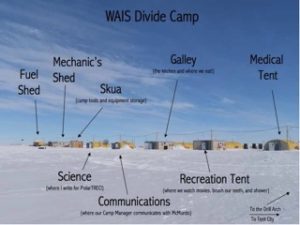 The deep coring started in the 2006/2007 season using the Deep Ice Sheet Coring (DISC) drill developed and operated by the Ice Drilling Design and Operations group at the University of Wisconsin, Madison. The coring was stopped in December 2011 at a depth of 3,405 m, which is ~ 50 m above the bottom of the ice sheet. The last 50 m of ice was left in place to provide a barrier between the borehole and the pristine aqueous basal environment. The ice at the bottom of the hole fell as snow 67,748 years ago. In the 2012-2013 season additional core was collected in zones of high scientific interest.
The deep coring started in the 2006/2007 season using the Deep Ice Sheet Coring (DISC) drill developed and operated by the Ice Drilling Design and Operations group at the University of Wisconsin, Madison. The coring was stopped in December 2011 at a depth of 3,405 m, which is ~ 50 m above the bottom of the ice sheet. The last 50 m of ice was left in place to provide a barrier between the borehole and the pristine aqueous basal environment. The ice at the bottom of the hole fell as snow 67,748 years ago. In the 2012-2013 season additional core was collected in zones of high scientific interest.